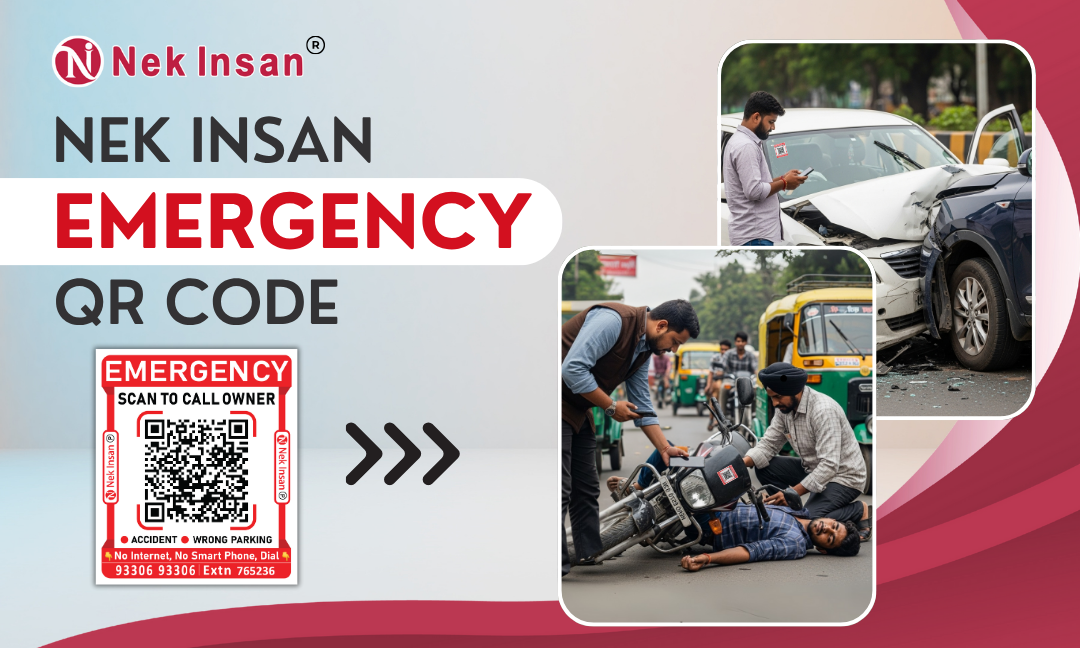
NekInsan Emergency QR Code
23 hours, 50 minutes
Search to learn about new product features, the latest technology and updates

Views: 616 | Updated: 6 months, 3 weeks ago
Introduction: How to Prevent Road Accidents
Avoid Distractions While Driving
Buckle Up and Wear a Helmet
Slow Down in Changing Weather Conditions
Avoid Aggressive Driving
Stay Aware of Your Surroundings
Pay Attention to Potholes and Road Hazards
Stay Out of the Way of Emergency Vehicles
Follow the 3-Second Rule
Be Cautious Around Pedestrians
Avoid Driving Under the Influence
Don’t Panic in an Emergency
Introducing Nek Insan QR for Bike and Car Safety
How Nek Insan QR Works
Pros of Using Nek Insan QR
Conclusion: Road Safety and the Role of Technology
Road accidents are often tragic and can cause severe injuries, financial hardship, and emotional turmoil. While it’s not always possible to completely avoid an accident, there are precautions we can take to reduce the risk. The following tips can help make your driving and biking experience safer:
Distractions like texting, eating, or fiddling with your phone can be deadly. Even using hands-free phones can cause accidents. Keep your focus on the road, and never engage in activities that take your attention away from driving.
Always wear your seatbelt, regardless of your seating position in the car, and make sure all passengers, including those in the rear seats, do the same. For bikers, wearing a helmet is a must. This is one of the simplest yet most effective ways to protect yourself in the event of an accident.
Bad weather conditions like rain, snow, or fog can significantly reduce visibility and increase the likelihood of accidents. Slow down, increase your following distance, and drive cautiously to avoid skidding or losing control.
Tailgating, speeding, and road rage are major causes of accidents. When you’re on the road, remember to stay calm and be patient. If you’re in a hurry, it’s safer to leave early rather than rush. Aggressive driving increases your chances of collisions, both in cars and on bikes.
Whether you're driving a car or riding a bike, always keep an eye on your surroundings. Be ready to react to any sudden changes, such as pedestrians crossing the road or vehicles running red lights. Paying attention to the road can prevent many accidents from happening.
Potholes, debris, and uneven road surfaces are dangerous for both cars and bikes. They can cause tire damage or loss of control. Always be vigilant, and slow down when approaching potential hazards.
Yield the right of way to emergency vehicles with flashing lights and sirens. It is illegal to pass an emergency vehicle unless directed by law enforcement.
Maintaining a safe distance from the vehicle ahead is essential. The 3-second rule is simple: choose a stationary object on the side of the road, and count when the car in front of you passes it. If you reach the object before counting to 3, you're following too closely. Increase the distance in poor weather conditions.
Pedestrians are vulnerable on the road, so it's important to respect crosswalks and traffic signals. Never pass a vehicle that has stopped at a pedestrian crossing, and be cautious around schools or residential areas where children may be walking.
Never drive under the influence of alcohol or drugs. Driving impaired is one of the leading causes of accidents and is extremely dangerous for everyone involved.
If you’re involved in an accident, staying calm is essential. Panicking can cloud your judgment and worsen the situation. Take a deep breath, assess the situation, and act according to the necessary steps. Always check for injuries, contact the authorities, and provide all the relevant details.
In the age of technology, QR codes have become a game-changer for road safety. The Nek Insan QR can be used to immediately report accidents, unsafe driving behavior, or road hazards. Here's how it can make a difference:
Scan the QR code – Available on your car’s or bike’s safety stickers, this QR code gives immediate access to emergency services and road safety features.
Report Hazards or Accidents – If you witness unsafe driving, a potential hazard, or are involved in an accident, you can easily scan the QR code to report it. The system sends an alert to relevant authorities or emergency services for quick action.
Access Emergency Information – In case of an accident, emergency responders can scan your vehicle’s QR code to get critical medical information, which can save valuable time.
Immediate Access: Provides instant access to emergency contacts and medical records, reducing delays in emergency situations.
Easier Accident Reporting: Allows drivers and riders to quickly report unsafe behavior or accidents, leading to faster intervention by authorities.
Increased Safety Awareness: Encourages drivers and bikers to prioritize safety and follow road rules by making it easier to report violations.
Quick Accident Assistance: In case of an emergency, emergency services can access important details via the QR code, improving response time and care.
